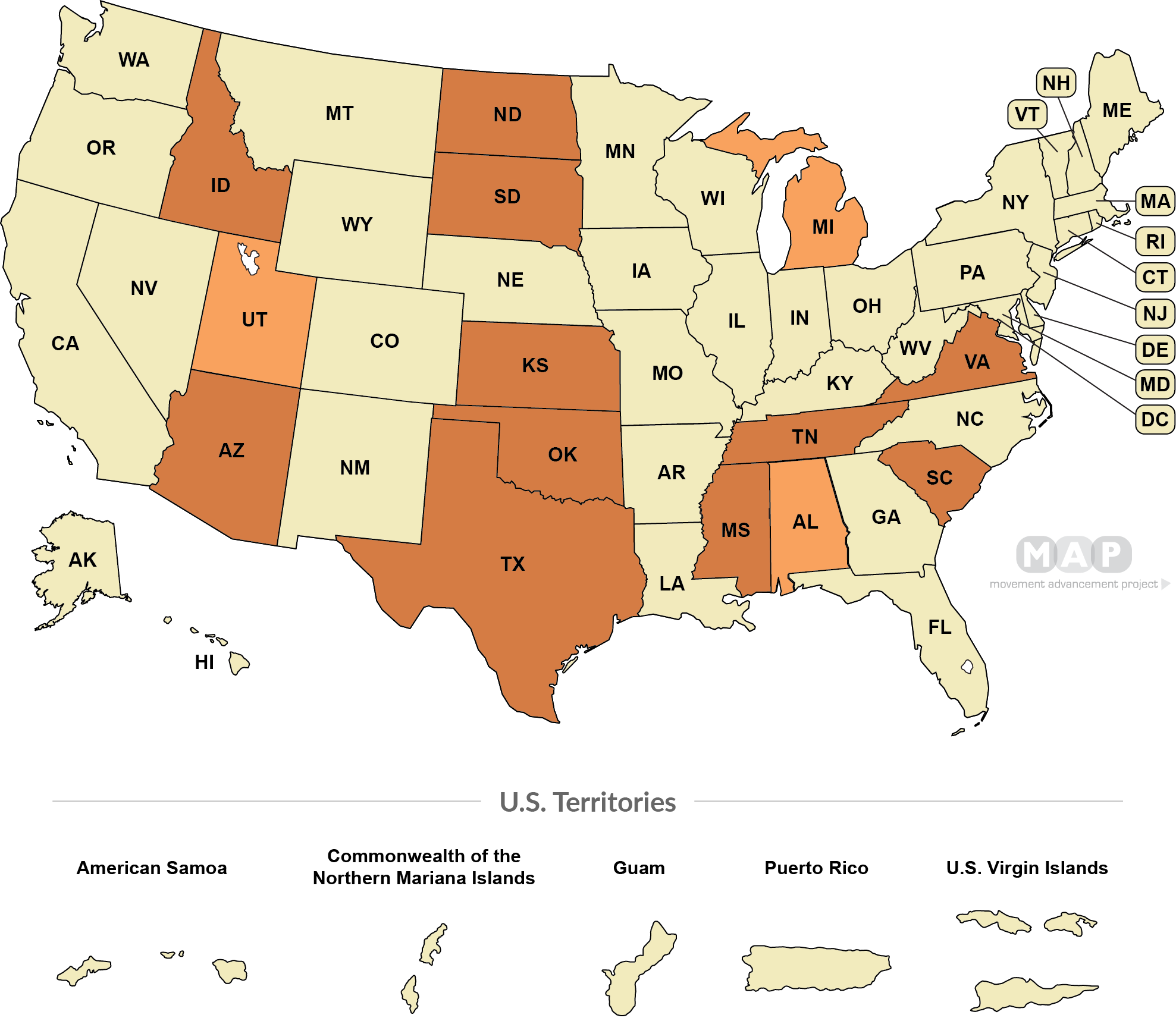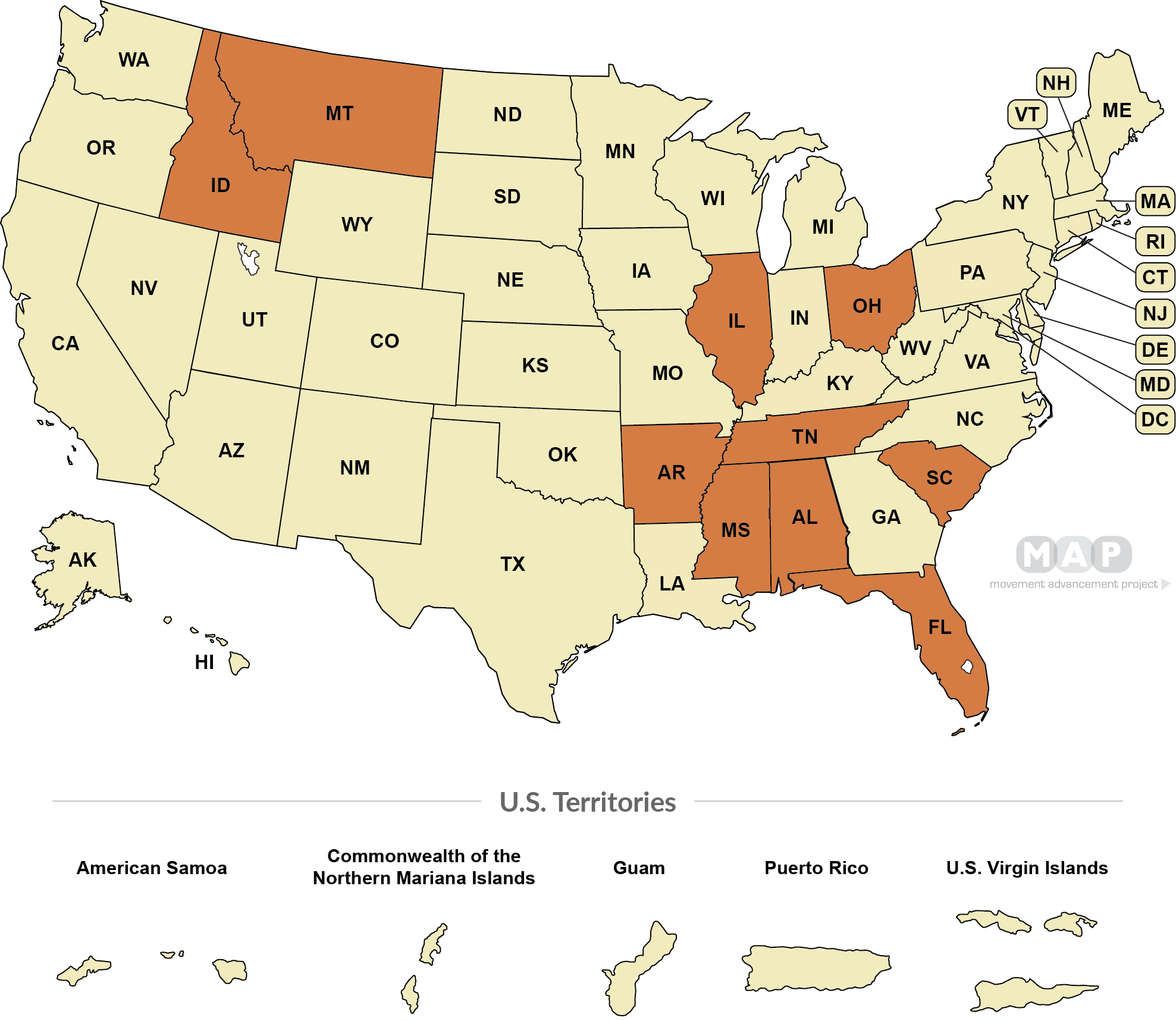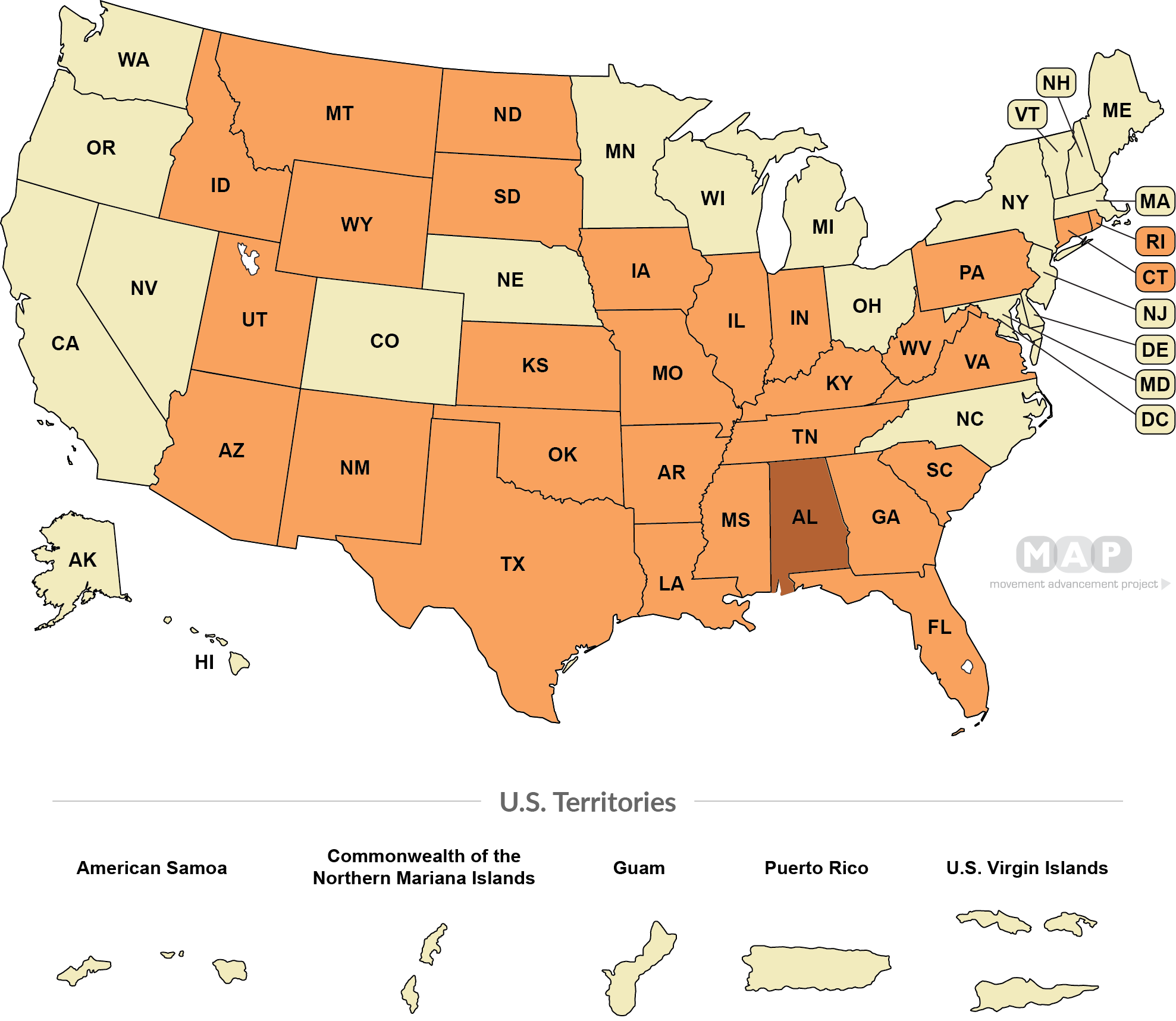| State |
Targeted Adoption/Child Services Denial |
Targeted Medical Professionals Denial |
Targeted Marriage Services Denial |
Targeted Marriage License Denial |
Broad Religious Exemption |
| |
Citations
|
Citations
|
Citations
|
Citations
|
Citations
|
| Alabama |
State does not have this law |
State does not have this law |
|
|
State does not have this law |
| Alaska |
|
|
|
|
|
| American Samoa |
|
|
|
|
|
| Arizona |
State does not have this law |
|
|
|
State does not have this law |
| Arkansas |
|
State does not have this law |
State does not have this law |
State does not have this law |
State does not have this law |
| California |
|
|
|
|
|
| Colorado |
|
|
|
|
|
| Connecticut |
|
|
|
|
State does not have this law |
| Delaware |
|
|
|
|
|
| District of Columbia |
|
|
|
|
|
| Florida |
|
State does not have this law |
|
|
State does not have this law |
| Georgia |
|
|
|
|
State does not have this law |
| Guam |
|
|
|
|
|
| Hawaii |
|
|
|
|
|
| Idaho |
State does not have this law |
State does not have this law |
|
|
State does not have this law |
| Illinois |
|
State does not have this law |
|
|
State does not have this law |
| Indiana |
|
|
|
|
State does not have this law |
| Iowa |
|
|
|
|
State does not have this law |
| Kansas |
State does not have this law |
|
|
|
State does not have this law |
| Kentucky |
|
|
|
|
State does not have this law |
| Louisiana |
|
|
|
|
State does not have this law |
| Maine |
|
|
|
|
|
| Maryland |
|
|
|
|
|
| Massachusetts |
|
|
|
|
|
| Michigan |
State does not have this law |
|
|
|
|
| Minnesota |
|
|
|
|
|
| Mississippi |
State does not have this law |
State does not have this law |
State does not have this law |
State does not have this law |
State does not have this law |
| Missouri |
|
|
|
|
State does not have this law |
| Montana |
|
State does not have this law |
|
|
State does not have this law |
| Nebraska |
|
|
|
|
|
| Nevada |
|
|
|
|
|
| New Hampshire |
|
|
|
|
|
| New Jersey |
|
|
|
|
|
| New Mexico |
|
|
|
|
State does not have this law |
| New York |
|
|
|
|
|
| North Carolina |
|
|
|
State does not have this law |
|
| North Dakota |
State does not have this law |
|
|
|
State does not have this law |
| Northern Mariana Islands |
|
|
|
|
|
| Ohio |
|
State does not have this law |
|
|
|
| Oklahoma |
State does not have this law |
|
|
|
State does not have this law |
| Oregon |
|
|
|
|
|
| Pennsylvania |
|
|
|
|
State does not have this law |
| Puerto Rico |
|
|
|
|
|
| Rhode Island |
|
|
|
|
State does not have this law |
| South Carolina |
State does not have this law |
State does not have this law |
|
|
State does not have this law |
| South Dakota |
State does not have this law |
|
|
|
State does not have this law |
| Tennessee |
State does not have this law |
State does not have this law |
|
State does not have this law |
State does not have this law |
| Texas |
State does not have this law |
|
|
|
State does not have this law |
| U.S. Virgin Islands |
|
|
|
|
|
| Utah |
State does not have this law |
|
|
|
State does not have this law |
| Vermont |
|
|
|
|
|
| Virginia |
State does not have this law |
|
|
|
State does not have this law |
| Washington |
|
|
|
|
|
| West Virginia |
|
|
|
|
State does not have this law |
| Wisconsin |
|
|
|
|
|
| Wyoming |
|
|
|
|
State does not have this law |





